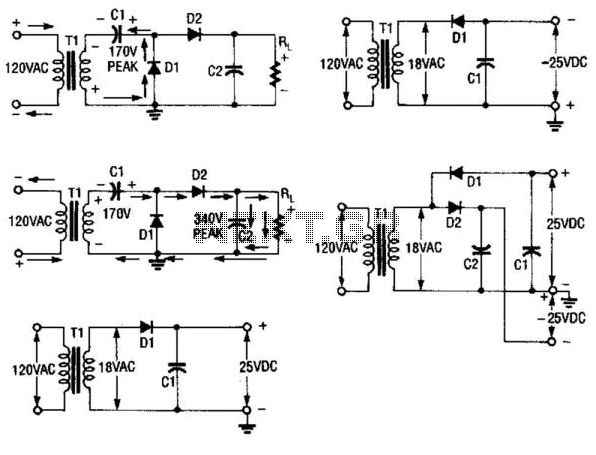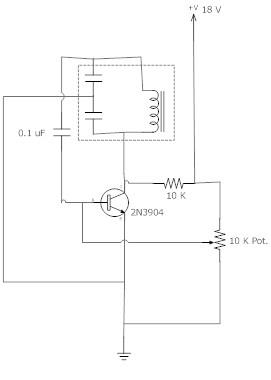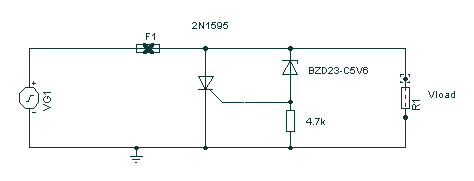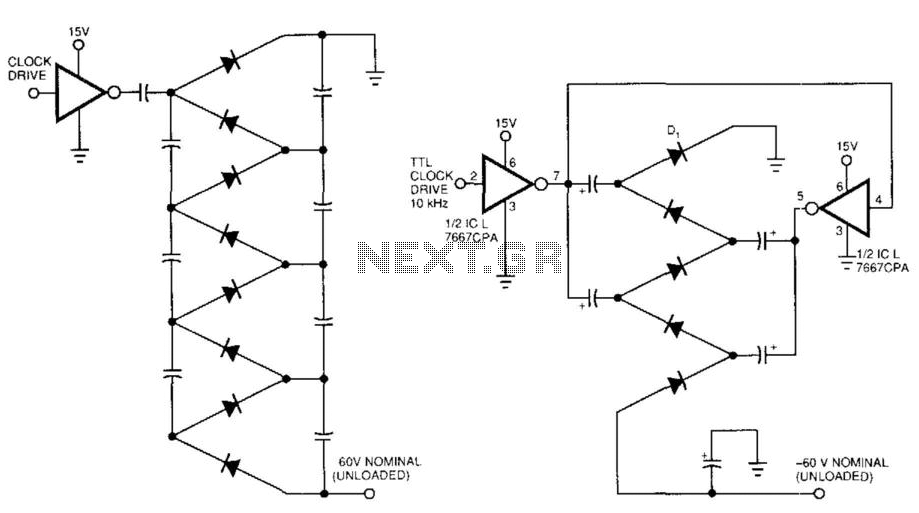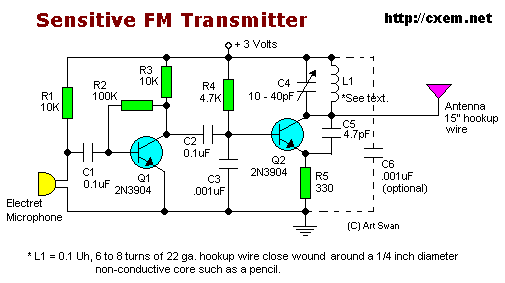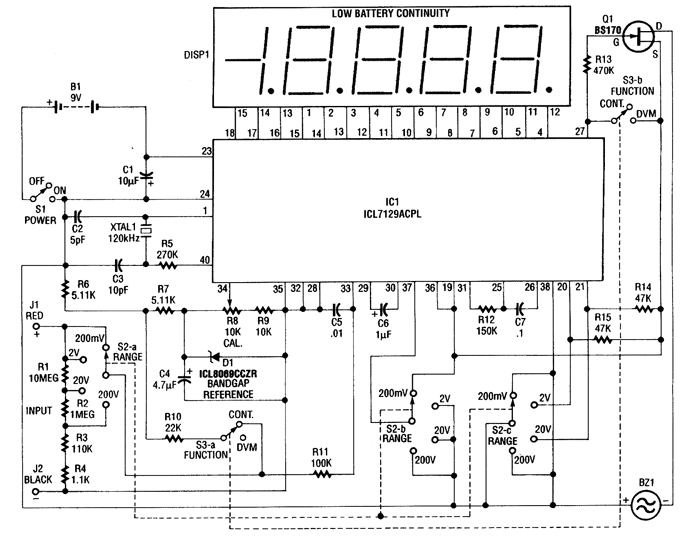
1.5 Volt Tracking Transmitter
A 1.5 Volt tracking transmitter utilizing simple circuits. The current draw for this tracker is 3.7 mA, allowing the 1.5V button cell to have a prolonged lifespan.
The 1.5 Volt tracking transmitter is designed to operate efficiently with a low current draw of 3.7 mA. This low power consumption enables the use of a 1.5V button cell battery, which can provide extended operational time before requiring replacement. The circuit typically comprises a transmitter module, a power supply section, and an antenna for signal emission.
The transmitter module may include a microcontroller or an oscillator circuit that generates a specific frequency signal. The simplicity of the circuit allows for easy assembly and troubleshooting, making it suitable for various applications such as personal tracking devices or remote monitoring systems.
The power supply section is designed to regulate the voltage from the button cell to ensure stable operation of the transmitter. This may include components such as capacitors for filtering and resistors for current limiting. The antenna, which can be a simple wire or a more complex design, is essential for transmitting the signal over a desired distance.
Overall, this tracking transmitter circuit exemplifies a straightforward approach to creating a low-power, efficient device capable of reliable performance in tracking applications.1.5 Volt Tracking Transmitter, Simple circuits , The current draw for this tracker is 3.7mA, so the 1.5V button cell will last awhile. What the heck am I suppose to hear you ask? When your circuit is.. 🔗 External reference
The 1.5 Volt tracking transmitter is designed to operate efficiently with a low current draw of 3.7 mA. This low power consumption enables the use of a 1.5V button cell battery, which can provide extended operational time before requiring replacement. The circuit typically comprises a transmitter module, a power supply section, and an antenna for signal emission.
The transmitter module may include a microcontroller or an oscillator circuit that generates a specific frequency signal. The simplicity of the circuit allows for easy assembly and troubleshooting, making it suitable for various applications such as personal tracking devices or remote monitoring systems.
The power supply section is designed to regulate the voltage from the button cell to ensure stable operation of the transmitter. This may include components such as capacitors for filtering and resistors for current limiting. The antenna, which can be a simple wire or a more complex design, is essential for transmitting the signal over a desired distance.
Overall, this tracking transmitter circuit exemplifies a straightforward approach to creating a low-power, efficient device capable of reliable performance in tracking applications.1.5 Volt Tracking Transmitter, Simple circuits , The current draw for this tracker is 3.7mA, so the 1.5V button cell will last awhile. What the heck am I suppose to hear you ask? When your circuit is.. 🔗 External reference
